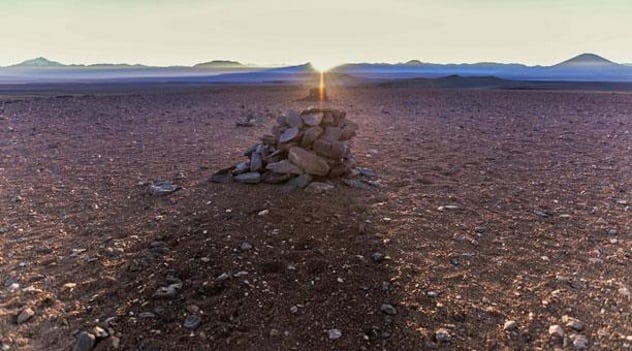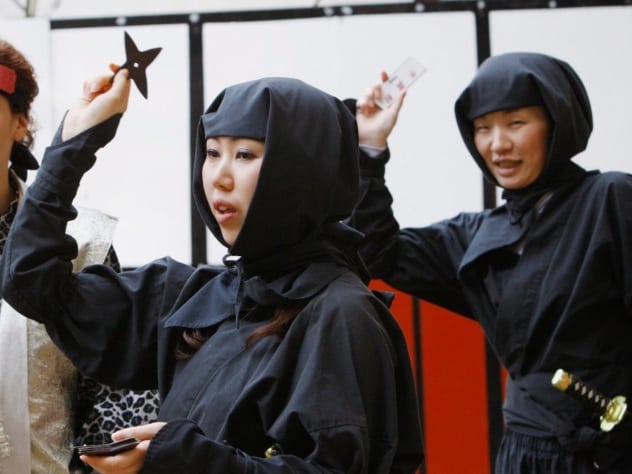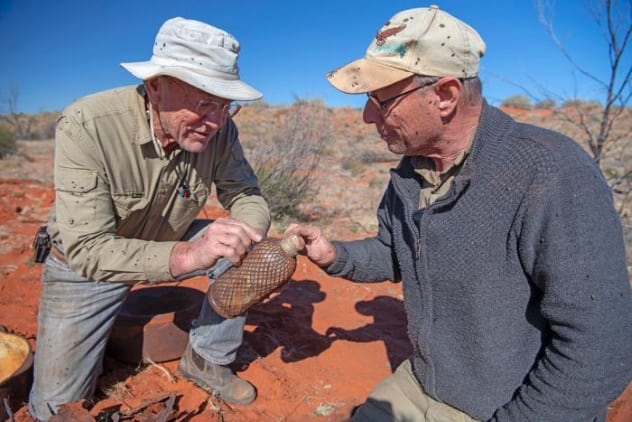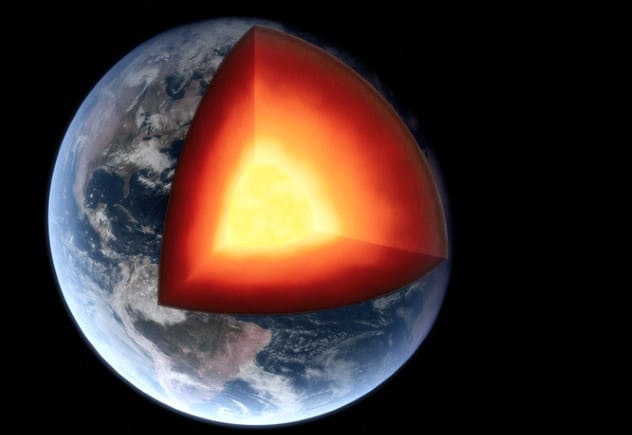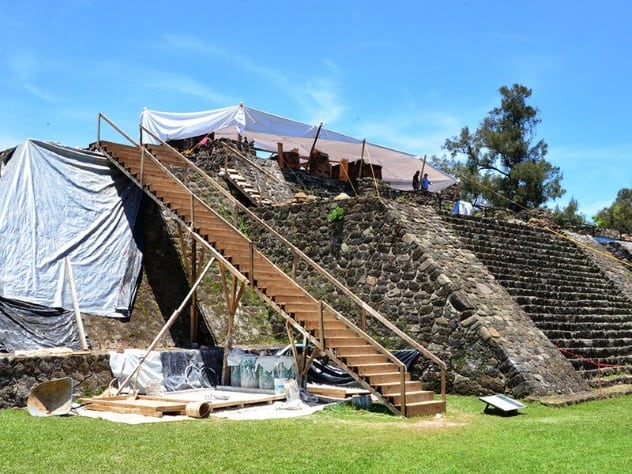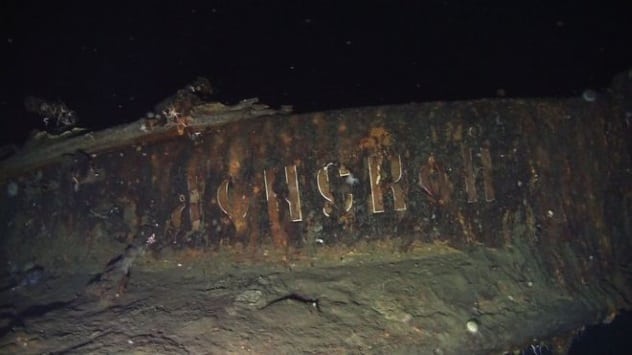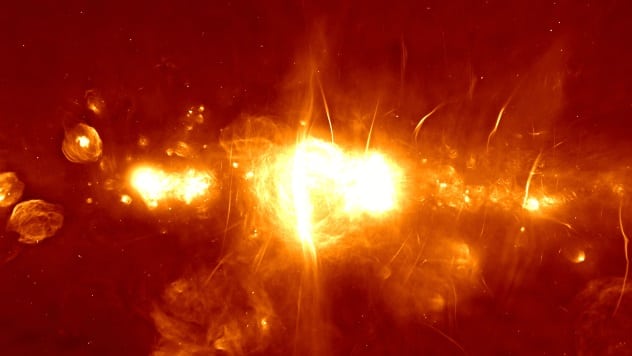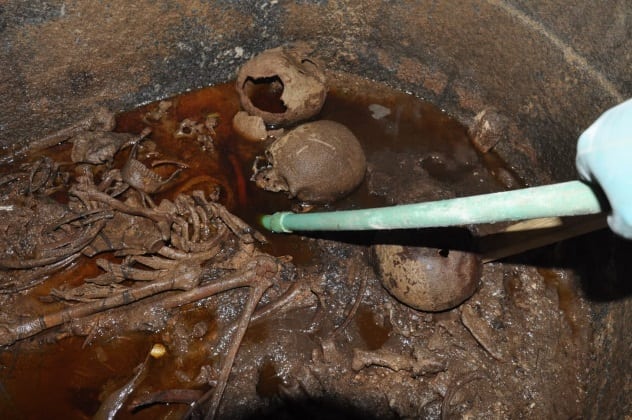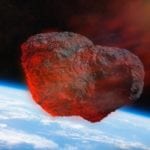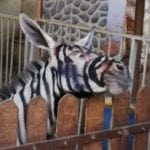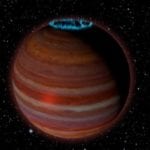This was a week of mysteries. Some of them were solved—the black sarcophagus, Barclay’s cache, the Inca saywas, and the cratonic roots. Others, like the wreck of the Dmitrii Donskoi and galactic filaments, are still waiting for an answer, although we took a few steps in the right direction.
10 Incas Used Saywas To Mark Astronomical Events
Archaeologists, astronomers, and historians worked together to elucidate a mystery behind a series of cairns built in the Inca Empire hundreds of years ago. These small pillars of rocks are known in the local Quechua language as saywas. They can be found in groups throughout the Atacama Desert, some up to 1,600 kilometers (1,000 mi) away from the former Inca capital of Cuzco. However, their purpose remained elusive until recently. Researchers from the Chilean Museum of Pre-Columbian Art determined that the saywas are astronomical markers that denote important events from the Inca calendar. With a little help from astronomers at the Atacama Large Millimeter Array (ALMA) and European Southern Observatory (ESO), they simulated sunrises and discovered that the Sun rose in alignment with the markers on important dates. They put their theory into practice in 2017. First, at a site called Vaquillas, the Sun rose in line with the saywas there to mark the autumn equinox. Next, on June 21, pillars at Ramaditas denoted the winter solstice in the Southern Hemisphere. At a third location, saywas were aligned with the Sun on August 1, marking the celebration of the fertility goddess Pachamama.[1] Researchers published their findings this April. There are still a few groups of pillars whose purpose remains unknown, but scientists are confident they will also reveal some kind of astronomical significance.
9 Japan Faces Ninja Shortage
Iga is a Japanese city in the Mie Prefecture whose main claim to fame is being the self-proclaimed birthplace of the ninja. Unsurprisingly, officials are keen to bank on this reputation to boost the local economy. There’s just one problem, though—Iga doesn’t have enough ninjas. The city already has a ninja museum and announced plans to build another. However, its biggest attraction is, undoubtedly, Iga Ueno Ninja Festa, its annual festival celebrating the masked warrior. It brings around 30,000 tourists to a city with a population under 100,000. However, at the moment, Iga doesn’t have enough ninjas to meet demand.[2] When we say “ninja,” we mean, of course, specialized performers who can put on shows and competitions which exhibit the skills and history of the ninja. There’s little need for actual guerilla warfare and covert missions in Japan these days. However, even though they are offered competitive salaries, people still aren’t interested in the job. Part of the reason for the scarcity is Japan’s low unemployment rate. However, the ninja shortage is, overall, a consequence of the country’s aging problem. Japan has the fastest-aging population on the planet, and most young people prefer to leave rural areas for big cities.
8 Scientists Discover An Oddball Moon
Scientists announced the discovery of 12 new moons orbiting Jupiter, one of which they described as “a real oddball.” The team from the Carnegie Institution for Science in Washington, DC, first spotted the satellites over a year ago while looking for the elusive Planet X far beyond Pluto. They needed to confirm that the objects did, in fact, orbit the gas giant, which is why the process took so long. Nine of the moons are found in an outer group of celestial objects orbiting Jupiter in retrograde, or the opposite direction of the planet’s spin rotation. They are bunched in several clusters, which leads scientists to believe they were once part of larger bodies broken apart by collisions. Two other moons are part of an inner cluster that takes about a year to make a prograde orbit of Jupiter. Like the others, scientists believe they were once part of a bigger celestial object. Now comes the “oddball,” which, according to team leader Scott S. Sheppard, has an orbit unlike any of the other Jovian moons.[3] It has a prograde rotation, like the inner moons, but it is more distant from Jupiter and follows a course that crosses that of the outer moons which are orbiting in the opposite direction. Head-on collisions are a distinct possibility, and, in fact, it is feasible that such a scenario led to the creation of the outer moons. To signify its specialness, it is the only newly discovered satellite to have been given a name so far. Astronomers call it Valetudo, after the Roman goddess of health and hygiene.
7 Racing Driver Uncovers Cache Of Artifacts
Back in the 1970s, Australian Larry Perkins (left above) was a Formula One driver. During the 1990s, he was winning titles in the Australian Touring Car Championships. Now, the former driver has traded in lightning-fast race cars for off-roaders and ATVs, which he uses to explore the Australian deserts. He recently uncovered a cache full of valuable artifacts left behind by English explorer Henry Vere Barclay over 100 years ago during an ill-fated expedition. Back in 1904, the former Royal Navy captain led the Barclay-McPherson expedition to survey the Northern Territories. In desperate search of a water source, he and his team were forced to dump most of their tools and personal belongings in order to cross the sandhills faster. About 180 kilograms (400 lb) of items were left behind. The cache should have been easy to recover. The second-in-command, Ronald McPherson, not only dutifully noted in his diary all the objects left behind but also marked the coordinates. However, two previous attempts, one in 1915 and the other in 2013, both failed to locate the hoard. Obviously, the coordinates were wrong, so Perkins didn’t bother going there again. Instead, he enlisted the help of his brother, Peter, climbed on an ATV, and began scouring the Simpson Desert, particularly focusing on an area about 100 kilometers (60 mi) from the original location. After about five days’ search, the brothers found the loot. With the help of professional archaeologists, they recovered about half of the cache. It contained scientific instruments, carpenter’s tools, painting equipment, photographic glass plates, and hundreds of rounds of ammo.[4] Larry is planning another trip soon, hoping to uncover the rest of Barclay’s loot.
6 Scientists Find A Quadrillion Tons Of Diamonds
A new study conducted by the Massachusetts Institute of Technology (MIT) concluded that between one and two percent of our planet’s oldest mantle rocks are made from diamond. In total, that’s around a quadrillion tons of diamonds sitting in the Earth’s interior. Scientists at MIT made the discovery while studying cratonic roots. Cratons are old sections of rock shaped like inverted mountains found beneath continental tectonic plates. The “roots” are the deepest sections of cratons, which can stretch for up to 320 kilometers (200 mi) below the Earth’s surface, passing through the crust and reaching into the mantle. This is much deeper than any drilling expedition ever went, so it is unlikely we will be tapping into this newfound resource anytime soon. Diamonds aside, the study also answers a question that has been puzzling seismologists for a while. Agencies like the United States Geological Survey keep track of seismic activity by measuring sound waves that pass through the Earth. They travel at different speeds based on various factors. Even so, their velocity was anomalous when passing through cratonic roots. After numerous simulations, MIT researchers concluded that only a rock with one to two percent diamond in addition to peridotite and minor amounts of eclogite would account for this unusual occurrence.[5]
5 Sexy Jeff Goldblum Poses In London
Londoners passing by Potters Field Park were treated to a newly built statue depicting Jeff Goldblum as Dr. Ian Malcolm in his iconic open-shirted reclining pose from Jurassic Park.[6] The 7.6-meter (25 ft), 150-kilogram (330 lb) monument was erected by Now TV to celebrate the 25th anniversary of the first movie and the birth of the Jurassic Park franchise. The reclining pose has become very popular online in recent years and has turned Ian Malcolm into somewhat of a sex symbol. Now TV showed they were in on the joke by announcing the statue using a fan-made clip of various Jurassic Park characters (including dinosaurs) heatedly reacting to seeing Goldblum in his seductive position. Fans have until July 26 to go take their pictures with the world’s sexiest chaotician.
4 Earthquake Reveals Hidden Aztec Temple
At first, archaeologists lamented when an earthquake damaged the 12th-century Aztec pyramid at Teopanzolco in September. However, that sorrow soon turned to excitement when they discovered a secret temple hidden underneath it. According to archaeologist Barbara Koniecza, the 7.1-magnitude earthquake caused considerable rearrangement of the core structure of the pyramid, which is believed to date back to 1150. For months, scientists from Mexico’s National Institute of Anthropology and History (INAH) have been using radar to map all the damage and structural changes that occurred at the site, which lies within the modern city of Cuernavaca. They unearthed a previously unknown structure measuring 6 meters by 4 meters (20 x 13 ft), which they believe is a shrine to Tlaloc, the Aztec god of rain.[7] The site already has two twin temples atop the north and south ends of the pyramid’s central platform. The northern one is dedicated to Tlaloc, while the southern temple honors Huitzilopochtli, the Aztec Sun god. The new shrine was buried 2 meters (6.6 ft) below the northern temple, leading archaeologists to believe that a matching structure dedicated to Huitzilopochtli could be found at the southern end.
3 We Found The Wreck Of The Dmitrii Donskoi
A South Korean salvage firm discovered the wreck of the Dmitrii Donskoi, a Russian warship scuttled over a century ago during the Russo-Japanese War. More tantalizing are the rumors that the Donskoi was carrying tons of gold at the time, which would be worth a fortune. The ship was built in 1885 and was struck in 1905, following the Battle of Tsushima. Its own crew scuttled it off the island of Ulleungdo after it fell behind the rest of the Russian fleet and was attacked by the Japanese. According to stories, the cruiser was carrying all the gold used to pay the salaries and docking fees for Russia’s Pacific Fleet. That means around 200 tons of gold bullion, worth around $130 billion today. With the allure of that kind of treasure, many companies tried and failed to recover the Dmitrii Donskoi over the years. The Shinil Group is the salvage firm which claims to have finally found the cruiser and has provided an image with its nameplate as evidence. However, there is no proof so far that the gold is aboard the Donskoi.[8] Academics raised a few concerns regarding the rumors. One, they don’t think such valuable cargo would be stored on a warship. Two, they find it unlikely that all the gold would be kept on just one ship. And three, they don’t see why Russia would use ships in the first place when transport by train was easier and safer. The salvage mission should proceed within the next few months.
2 A New Image Of Our Galactic Center
July 13 saw the inauguration of the MeerKat radio telescope, an ambitious project which consists of 64 mirrors spread out through South Africa’s Northern Cape. Scientists have already put it to good use by releasing a stunning image of the center of our galaxy. The image is a panorama which covers about 1,000 light-years by 500 light-years. The center of the Milky Way is enshrouded by thick clouds of gas and dust, making it impossible to image using regular telescopes. However, MeerKat observed it using radio frequencies between 900 and 1670 megahertz and captured an image of filaments surrounding the central supermassive black hole. We are unsure what these filaments actually are. They were first discovered in the 1980s using New Mexico’s Very Large Array (VLA), but their origin remains a mystery. So far, they have only been found near the black hole at the center of our galaxy.[9] Scientists are confident that MeerKat is capable of better images once it is properly optimized, so we may find out the answer in the near future.
1 We Opened The Black Sarcophagus
Last week, we talked about a black sarcophagus found in Alexandria which has been untouched for over 2,000 years. Speculation ran rampant about what or who could be hiding inside. Some even hoped that it could be the final resting place of Alexander the Great. This week, archaeologists opened the sarcophagus and found three skeletons swimming in sewage water.[10] The first thing scientists noticed after lifting the lid just a few centimeters was an unbearable stench which forced people to evacuate the scene. To everyone’s disappointment, while the sarcophagus managed to evade looters, it was still subjected to a leak which dripped in sewage water and completely decomposed the three mummies resting inside. Fortunately, the bones, particularly the skulls, are still in pretty good condition. They will be analyzed to see what they can tell us about the coffin’s occupants. Best guess says the three were soldiers, as one of the skulls has a crack resembling an arrow injury.
